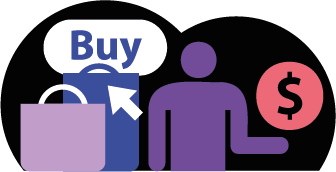Features Tell, Benefits Sell: The Key to Captivating Your Audience

In today’s highly competitive market landscape, product features are often considered a baseline rather than a differentiator. While the features of a product describe its technical attributes, it’s the benefits that grab a customer’s attention and drive sales. But what exactly are these two aspects, and how do they differ? More importantly, how can focusing on benefits help you captivate your audience? Let’s dive into it.
The Characteristics of a Product: Features TellWhen we talk about product features, we refer to the concrete and specific aspects that define a product. Whether it’s the size of a phone’s screen, the quality of its camera, or the type of battery it uses, features provide objective, measurable information. Features are tangible; you can touch them, measure them, and evaluate them in real terms. These are crucial for the technical audience who may want to know the specifications before making a purchase.
However, features alone may not fully translate to broader consumer interest. Your product might have an array of fascinating features, but what truly counts for the general public are its benefits.
The True Value Proposition: Benefits Sell
The saying “features tell, benefits sell” is not just a catchy slogan; it’s a marketing axiom that underscores the essence of effective communication. Benefits focus on the value your product brings to a user’s life. Unlike features, which are centric to the product, benefits are centric to the customer.
Benefits answer the essential question every customer consciously or subconsciously asks: “What does it do for my life?” For instance, a smartphone with a long-lasting battery doesn’t just have ‘a great battery’; it offers the benefit of “freedom from frequent charging,” enabling users to go about their day without battery anxiety.
Asking the Right Questions to Highlight Benefits
To leverage the benefits for your marketing communications, you need to delve into what your customers really want. This requires asking specific questions about your product:
- Does my product save time? If your software can automate tasks, don’t just say it’s “automated”—tell your customers how it frees up their time for more valuable work.
- Does it make tasks easier or more efficient? If your product simplifies a complicated process, focus on the ease and peace of mind that come with using your product.
- Does it solve a common problem? Whether it’s a vacuum cleaner that reaches tight corners or a service that simplifies online payments, pinpoint the problems you’re solving and how it makes life better for your customers.
By asking and answering these questions, you can create marketing messages that resonate with potential customers. For instance, rather than saying “our software automates your workflow,” you could say, “get more time to focus on what really matters, while our software takes care of the mundane tasks for you.”
The Emotional Connection
By highlighting benefits over features, you create an emotional connection with your audience. You show them you understand their needs, fears, or problems, and present your product as the solution. This fosters trust and can set you apart from competitors who are only feature-focused.
Conclusion
To sum up, while features are essential for educating your audience about what your product does, benefits are crucial for showing them how it will improve their lives. This shift in narrative from features to benefits can have a profound impact on how customers perceive your product and, more importantly, whether they decide to purchase it or not.